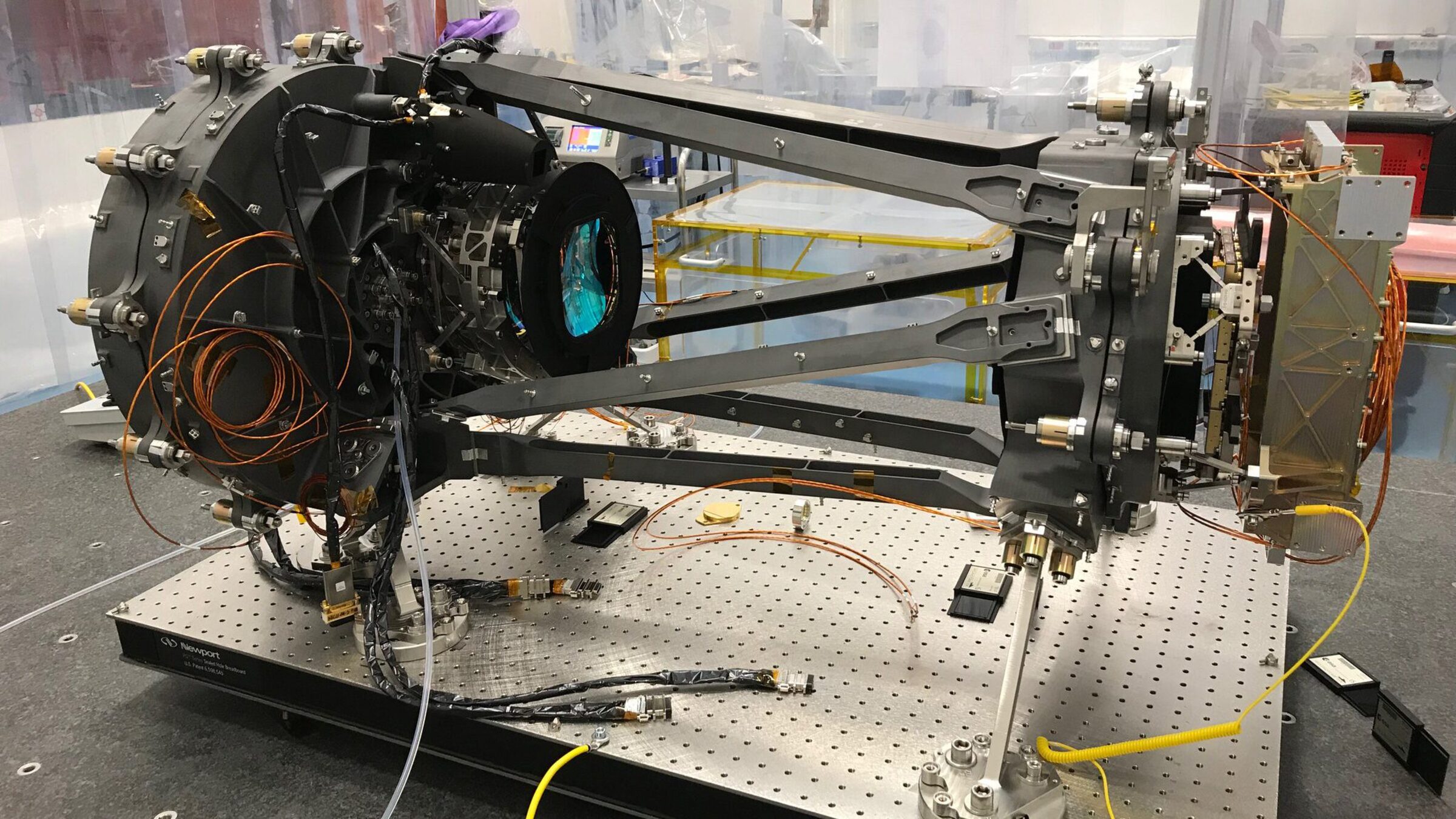
Euclid NISP Instrument

NISP (Near Infrared Spectrometer and Photometer) is one of the two instruments on Euclid. NISP has two modes: imaging and slitless spectroscopy. It provides spectroscopic redshift data for galaxy clustering science, and near-infrared photometry needed to obtain accurate photometric redshifts for weak lensing. Thus NISP is required for both of the primary cosmology science goals for Euclid.
NISP covers the same field-of-view as the VIS instrument, but in near-infrared light between ~950 and 2020nm. NISP creates images with 16 Teledyne “H2RG” detectors, with each 2k by 2k pixels, or about 64 million pixels in total, with a sampling on the sky of 0.3 arcseconds per pixel, over a field of view of 0.57 square degrees.
For more details on NISP, click here.
This is the test image from NISP on Euclid (now in an L2 orbit):
